Space
Sign up for our newsletter
We summarize the week's scientific breakthroughs every Thursday.
-
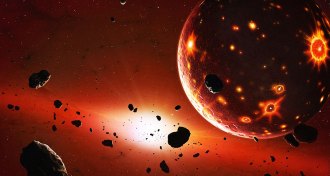 Planetary Science
Planetary ScienceThis meteorite’s diamonds hint that it was born in a lost planet
Bits of metal nestled inside diamonds suggest the space rock could have formed in a Mars-sized protoplanet in the early solar system.
-
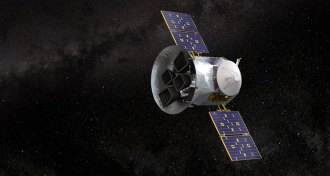 Astronomy
AstronomyDelayed launch of NASA’s next exoplanet hunter is now set for tonight
NASA’s next exoplanet hunter, TESS, launches today to seek planets in 85 percent of the sky.
-
 Space
SpaceLasers squeezed iron to mimic the conditions of exoplanet cores
In the first experiment to measure what exoplanets might be like on the inside, scientists hit iron with 176 lasers at once.
-
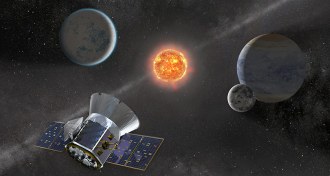 Astronomy
AstronomyWith the launch of TESS, NASA will boost its search for exoplanets
The Transiting Exoplanet Survey Satellite will set the stage for the next chapter of exoplanet exploration.
-
 Physics
PhysicsEinstein’s general relativity reveals new quirk of Mercury’s orbit
A tiny effect of general relativity on Mercury’s orbit has been calculated for the first time.
-
 Particle Physics
Particle PhysicsThe search for mysterious dark matter underdogs steps up
Dark matter particles called axions are finally being put to the test.
-
 Astronomy
AstronomyDark matter isn’t interacting with itself after all
Hints that a distant galactic collision knocked dark matter askew fizzled with new observations.
-
 Paleontology
PaleontologyReaders debate dinosaur designation and more
Readers had questions about the dino family tree and Venus' habitability.
-
 Astronomy
AstronomyA dozen new black holes found in Milky Way’s center
Twelve small black holes spotted in the Milky Way’s center suggest thousands more in the galaxy’s inner region.
-
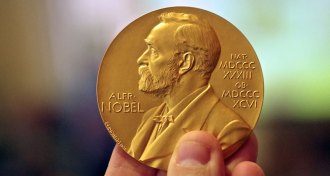 Cosmology
CosmologyWhy the Nobel Prize might need a makeover
In Losing the Nobel Prize, astrophysicist Brian Keating discusses the downsides of science’s top honor.
-
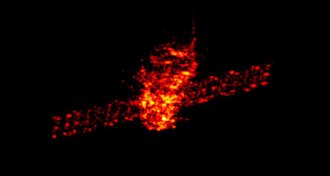 Astronomy
AstronomyA Chinese space station will fall to Earth this weekend
The Chinese space agency’s first space station is coming back to Earth this weekend. It probably won’t cause damage, but it will cause fireworks.
-
 Astronomy
AstronomyDark matter is MIA in this strange galaxy
A galaxy without dark matter bolsters the case that the invisible substance really exists.